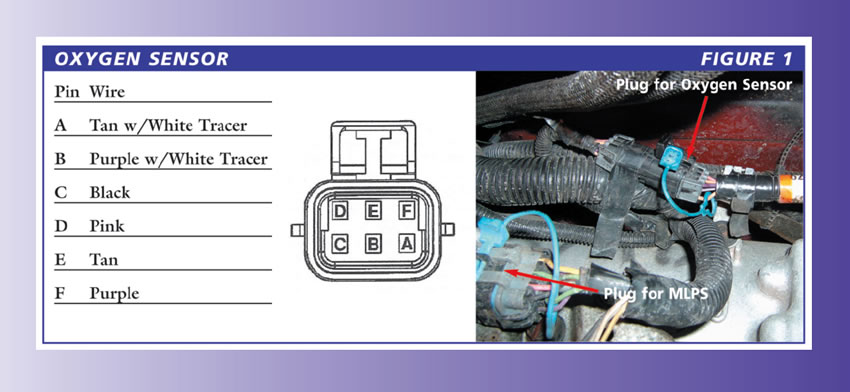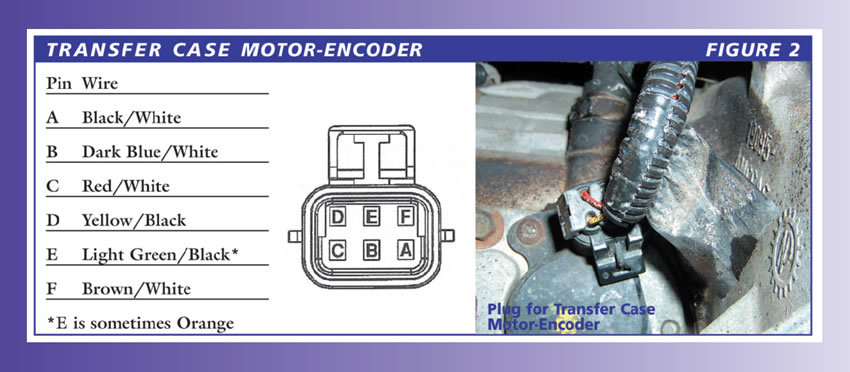
TASC Force Tips
- Author: Ed Lee, Deltrans
A 1997 Chevrolet Suburban 4×4 arrives at a transmission shop with no 3rd or 4th gear. All of the usual pre-checks were performed, including a cooler-flow check and checking for codes. The problem appeared to be the normal _ clutch failure, and subsequent internal inspection verified the original diagnosis.
The converter replacement, transmission overhaul and R&R seemed to go routinely. The technician finished the R&R, rechecked the cooler flow and road-tested the vehicle. After a short road test the technician returned and reported that the vehicle had early upshifts and seemed to be in 4×4 low range. A check of the vehicle confirmed that it was in 4×4 low range and remained in 4×4 low range in all transfer-case selector-switch positions.
A scan check at this time showed no codes present. Further inspection revealed that the fuse that powers the transfer-case selector switch was blown. The wiring harness was disconnected from the transfer-case motor-encoder and the fuse was replaced. The fuse immediately blew as it was being installed, proving that the short was still present. The shop owner started thinking that his R&R man had caught the wiring harness between the transmission bellhousing and engine. A visual inspection of the bellhousing-to-engine connection did not reveal any abnormalities.
Since the power from the switch to the transfer case goes to the transfer-case control module (TCCM) on its way to the transfer case, checking the continuity of the wires was a two-part ordeal. Checking the wiring from the transfer-case motor-encoder six-wire gang plug to the TCCM showed that there was continuity among three of the wires. The bad thoughts that the owner was having about his R&R man were returning, because he was now sure that the R&R man had caused a short in the wiring.
Following the wiring harness from the transfer-case motor-encoder to the bellhousing did not find the short. However, one important clue was uncovered. There was a second six-wire gang plug above the transmission case that looked very similar to the motor-encoder plug (figures 1 and 2). The trailing wires from the plugs were about the same length.


Both gang plugs were black, and the fold-over wire retainers were both light gray. The only difference between the two plugs was in the colors of the individual wires. The second six-wire gang plug was for the oxygen sensors.
Once you are aware that the wire harnesses can be connected incorrectly, it is easy to look back at the problem. When the transfer-case motor-encoder plug is connected to the oxygen sensor, it will short, blowing the fuse; and when the oxygen-sensor plug is connected to the motor-encoder, it shifts the transfer case to 4×4 low range.
After the transmission was removed, the vehicle was moved out of the building. Since the trailing end of the wire harness was long enough to drag on the ground, something had to be done to secure it. The R&R man found that with the oxygen-sensor plug disconnected, the remaining wire harness would swing over and rest neatly on top of the frame rail.
It is easy to second-guess and say that the trailing harness should have been secured in another manner (e.g., wire-tied). But it is equally true that the oxygen-sensor plug may have been disconnected for another reason, such as oxygen-sensor damage during transmission removal.
In either case, knowing the proper colors of each plug wire will get the plugs reconnected correctly to their proper components. In the past, the KM speed-sensor plug and main transmission plug were connected incorrectly many times. Technicians learned to look at the wire colors, and they will learn to look at the wire colors on the GM oxygen sensors and transfer-case motor-encoders, too.
Just for the record, an oxygen-sensor code would have been present if the vehicle had been driven a longer distance, but who wants to keep driving a vehicle that is stuck in 4×4 low range?
The TASC Force (Technical Automotive Specialties Committee) is a group of recognized industry technical specialists, transmission rebuilders and Sonnax Industries Inc. technicians.














